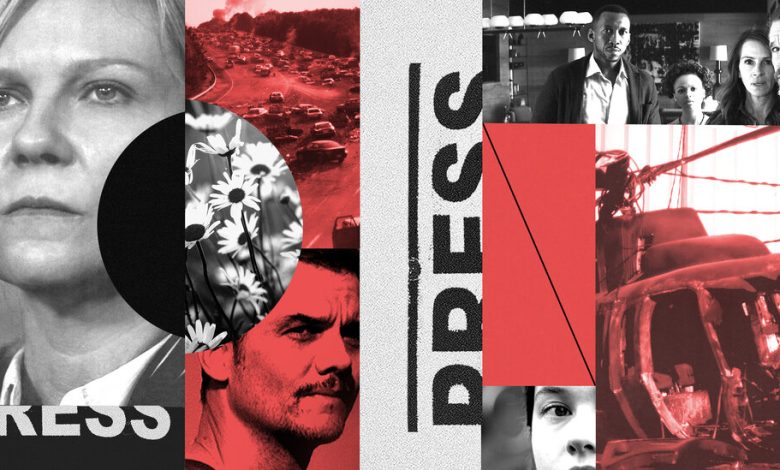Why Are Movies so Bad at Making Civil War Look Scary?

Early in “Civil War,” the writer-director Alex Garland’s dystopian blockbuster, a plucky young journalist named Jessie recalls an event called the Antifa Massacre. You can picture the eeriness that Garland must have assumed that phrase would conjure: familiar words, filtered through his apocalyptic vision, projecting today’s ideological rancor into the future. His film is an invitation to imagine what might emerge from America’s political divisions if we don’t back away from the fractious disaffection that has characterized most of the 21st century. But it is also vague about what the Antifa Massacre, or any of the war, actually is. Who was massacred? Who did the massacring? What were the stakes?
All we know is that America has descended into a chaotic conflict: California and Texas have united to battle an authoritarian Loyalist government, while other states have gathered into various alliances. Beyond that, “Civil War” obscures the war’s political and social contours. One senses that, for Garland, the ideological dimensions are beside the point, a distraction from what he hopes is a searing vision of a future nobody wants.
To that end, maybe, he has cast “Civil War” as an antiwar movie in the tradition of Elem Klimov’s “Come and See,” a 1985 fever dream about Nazi Germany’s invasion of Soviet Byelorussia. The power of “Come and See” lies in its images, which depict war’s depravity with the unsparing clarity of prophecy. One 10-minute scene forces us to watch a carnival of violence as German soldiers, who have gathered civilians into a church, set it aflame. Garland intends a similar revelation. In interviews, he and his cast have made it clear that they see “Civil War” as a warning. You can practically hear him whisper through every frame: This could happen here.
François Truffaut once said that every film about war ends up being pro-war: Whatever a director points his camera at, even violence, becomes appealing, or at least intriguing. To make an effective antiwar film, a director must find a way to unsettle this relationship between image and titillation. I think often about the 1966 Italian thriller “The Battle of Algiers,” which depicts Algerian resistance to French colonial rule. It is, generally, a triumphalist take on the power of liberatory violence, and it has proved popular among armed insurgents. There’s a mournful, cautionary undercurrent, though, that sometimes overwhelms its heroic story. In one scene, two women smuggle bombs out of a ghetto and into French cafes. One leaves hers beneath a bar, and we wait while the camera cuts from one French face to another: a flirting couple, a sullen baby, a laughing barkeep, a waiter who looks directly at us. In that long wait before the bomb goes off, we are tricked into a moral accounting of political violence’s toll on human life. The movie reminds us that our attraction to violence also threatens to destroy the society we depend on, plunging us into a Hobbesian state of nature.
This balancing act depends on depicting the social costs of war on the lives of civilians — something contemporary films about war on American soil have struggled to accomplish. “Civil War” follows Kirsten Dunst as Lee, a war photographer traveling from New York to Washington with her gonzo bro colleague Joel, hoping to photograph the president while Joel interviews him. They’re joined by Jessie and Sammy, Lee’s mentor. What unfolds is essentially a road-trip movie that shuttles this quartet from one apocalyptic set piece to another. They are journalists, but they do no reporting on the tragedies they encounter on the way to their big scoop. They don’t meet many people, and when they do, they are rigorously incurious. They arrive at a refugee camp, yet make no attempt to interview any refugees. Why are two soldiers shooting at another amid a Christmas display? Joel makes only a cursory effort to find out. These are war journalists with a strange lack of interest in covering the war’s victims or America’s shredded social fabric. Garland’s vision is almost entirely restricted to destroyed buildings and corpses.



